
The Surprising Power of Growth Mindset in Reducing Stress
Stress can be thought of simply as heightened attention to the negative. Using a growth mindset can help with reducing stress in the moment.
Thank you for searching the NeuroLeadership Institute archives. Here’s what we were able to find for you.
Still having difficulty finding what you’re looking for? Contact us.

Stress can be thought of simply as heightened attention to the negative. Using a growth mindset can help with reducing stress in the moment.

Leaders typically think of growth mindset in terms of performance, personal growth, career development, and skills improvement. But the concept also can be crucial to driving diversity and inclusion efforts. The key: Whether you believe you are capable of improvement often determines whether you think other people are capable of change. That, in turn, shapes how you view your team as a whole. At the NeuroLeadership Institute, we define growth mindset as the dual belief that skills can be improved over time, and that improving those skills is the goal of the work people do. We recently explored this concept in a white paper featuring growth-mindset case studies from five leading global organizations. What science says Research has found a number of benefits to building a growth mindset culture, specifically around inclusion. For instance, growth mindset can reduce stereotyping. Researchers have found that whether or not you think people are fixed or mutable in who they are shapes how many stereotypical judgments people make. If you use a growth mindset, you are more likely to attribute stereotype traits to environmental forces, rather than inborn traits. When making judgments, a growth mindset also helps people gather more information before coming to conclusions. In one study, those with a fixed mindset needed less context before making a decision, potentially leading to undesired or unforeseen outcomes. Growth mindset doesn’t just help people doing the stereotyping; it also helps people on the receiving end. Consider the idea of “stereotype threat.” It’s when members of a certain group do poorly on a task because they’re told they’re not “supposed” to excel. A body of research has shown that growth mindset can reduce the effects of stereotype threat, enabling people to perform closer to their true potential. The business case For organizations, the implication here is that cultivating a growth mindset culture can help drive down biased behavior and create stronger teams. Leaders who help their employees see failures as learning opportunities, and threats as new and exciting challenges, can also help those employees see others’ shortcomings not as signs of personal failings, but merely as a product of being human. When employees start accepting diverse team members as generally well-intentioned, though perhaps fallible, they can move from a culture of competition to one of true and inclusive collaboration. This article is the twelfth and final installment in NLI’s series, Growth Mindset: The Master Class, a 12-week campaign to help leaders see how the world’s largest organizations are putting growth mindset to use. [action hash=”cd97f93c-1daf-4547-8f7c-44b6f2a77b77″]
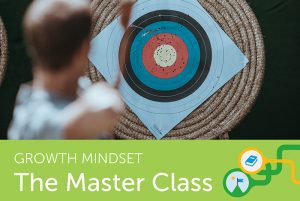
Across all of our industry research into growth mindset, one question keeps popping up for leaders: If we’re so focused on growth, can we still focus on results? We’ve heard the concern voiced in a number of different ways in discussions with organizations putting growth mindset to use, which we’ve featured in our latest white paper, “Impact Report: Growth Mindset Supports Organizations Through Disruption.” The paper showcases how firms make growth mindset come to life and drive lasting change. In short, the answer is yes. How to measure progress and results We define growth mindset as the belief that skills can be improved with persistent effort; they are not set in stone, or fixed. A Growth Mindset Culture is one where most, if not all, employees demonstrate that attitude in their shared everyday habits. They embrace failure. They take risks. They learn to get better. Fortunately, growth mindset makes room for an emphasis on learning and checking progress over time, because it’s not about comparing two different employees or teams to one another; it’s about comparing one employee or team to themselves. One way to do all that and still ensure you’re moving in the right direction is to perform a bit of mental contrasting. The technique involves holding in your mind’s eye the memories of the past or the vision of the desired future, and contrasting them with the present reality. When leaders contrast where they are to where they were, or where they’d like to go, they can evaluate the fruits of their growth mindset. They can ask themselves questions such as, How much have we grown? Are we growing in the right ways? What else still needs attention? In fact, it’s crucial that leaders encourage their teams to focus on results and learnings, since growth requires two endpoints. A team may never hit certain ideals, but by measuring achievement against specific objectives, leaders can know the growth mindset is working. In other words, growth mindset isn’t important just for its own sake. At some point, everyone still needs to stop and see how far they’ve come. This article is the tenth installment in NLI’s series, Growth Mindset: The Master Class, a 12-week campaign to help leaders see how the world’s largest organizations are putting growth mindset to use. [action hash=”cd97f93c-1daf-4547-8f7c-44b6f2a77b77″]
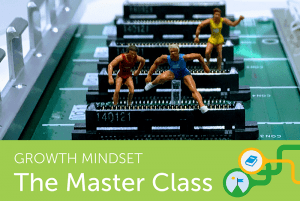
By now, most leaders understand that organizational growth mindset is a transformative tool for talent development. The belief that others can develop their abilities — and the ability to help them do so — are powerful ways to help employees become more resilient, more nimble, and more innovative. But actually putting all that into practice within an organization is more difficult than it sounds. As we recently learned in our industry research project — an endeavor we captured in a new white paper, “Growth Mindset Culture” — leaders are finding that two main obstacles keep getting in the way. Here’s what they’re about and how to address them. Obstacle #1: An imperfect understanding of growth mindset When it comes to cultivating growth mindset within an organization, it’s not enough for leaders to simply tell employees to have a growth mindset. Nor should leaders simply declare that they themselves have a growth mindset when the reality is that many leaders don’t fully understand it. For leaders to really embody growth mindset, they need to ask themselves: Do they truly believe in their own need to grow, and not just that of their employees? The best way to promote growth mindset throughout an organization, we’ve found, is for leaders to embody growth mindset themselves. Our research showed that leadership buy-in was critical for the success of growth-mindset initiatives. To assess their own understanding, leaders should ask themselves three questions: Do I believe that everyone in their organization has the capacity to grow? Do I believe there’s talent everywhere in the organization — talent that should be fostered and acknowledged as it emerges? Am I open about my own mistakes, and the lessons I draw from those mistakes? Only when leaders understand these principles fully, deeply, and accurately can they truly serve as models of growth mindset for their employees. Obstacle #2: Policies that don’t reflect a true commitment to growth Once leaders begin to master the principles of growth mindset, they can turn their attention to disseminating it throughout the organization. But fostering a culture of growth mindset requires more than just sending out a few emails or running a training workshop. It also means revising practices, policies, and systems throughout the organization to make sure they value not just performance, but learning, growth, and progress over time. Unfortunately, many organizations that claim to value growth mindset treat their employees in a way that doesn’t value their growth — for instance, firing an employee who makes a mistake rather than treating it as an opportunity to learn and grow. When this happens, it signals that the organization may be overvaluing performance relative to growth. The key to creating a supportive environment is communication. Employees and managers should speak frequently in a constructive evaluation process. They should discuss what they’re really happy with, what can still be improved, and how to collaborate on getting there. Ultimately, organizations that truly care about employees’ growth and development know that making mistakes is inevitable — and they foster an environment where mistakes are seen not as indictments of worth or ability, but as opportunities for growth and improvement. This article is the ninth installment in NLI’s new series, Growth Mindset: The Master Class, a 12-week campaign to help leaders see how the world’s largest organizations are putting growth mindset to use.

One of the key findings from NLI’s research into growth mindset — the belief that skills can be improved, and aren’t set in stone — is that organizations adopt certain principles to match their existing culture and suit their future needs. Still, even when leaders “make their own meanings,” as we say, they may face difficulty in accepting failures as learning opportunities and seeing challenges as chances for growth. Since no one tells you that building a growth mindset can be so uncomfortable, here are four steps to help you stay on course. 1. Get familiar with the feeling of fear Growth mindset is riddled with uncertainty, one of the key social threats found in the SCARF® Model, a way of organizing unique domains of threat and reward. When we feel highly uncertain, our attention narrows and our cognitive function suffers. When developing a growth mindset in a particular area, it’s important to identify moments of fearfulness to recognize which thoughts may be holding us back. Creating this self-awareness lets people determine whether they really are in tough situation or just new to something. 2. Know you will get frustrated, and that’s okay Developing a growth mindset doesn’t mean that all learning will come easy, and that you will feel great all the time. The key to building growth mindset is to recognize that setbacks are inevitable, and also temporary. Learning requires a willingness to figure out how to make progress and move forward despite initial frustrations. Sometimes the best remedy to a challenge is rethinking your approach. Taking a break to let past insights marinate can help re-energize you to tackle the problem again. 3. Monitor your progress in order to make adjustments Embracing your ability to grow, develop, and stretch will take practice, and a focus on measuring progress over time. It helps to look at what you’ve learned and where you have room to get even better. As we’ve written before, getting to a state of regular, specific feedback one of the best ways to develop a growth mindset. That means being willing to confront weak spots, concocting ways to adjust, and testing those solutions as soon as possible. 4. Share what you’ve learned and what it took to get there One of the most powerful ways to embrace the discomfort of developing a growth mindset is to share your journey and learning with others. As the G and E in the AGES model for learning suggest, generation and emotion are key to learning. We learn best when we can turn ideas into concrete writing or discussion, and create new energy around it. Sharing your wins and failures may create greater intrinsic reward, which research has shown is extremely motivating. And who knows, you may gain a Growth Mindset Partner as you share your story. This article is the eighth installment in NLI’s series, Growth Mindset: The Master Class, a 12-week campaign to help leaders see how the world’s largest organizations are putting growth mindset to use. [action hash=”cd97f93c-1daf-4547-8f7c-44b6f2a77b77″]
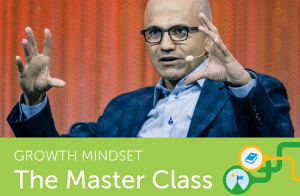
As Microsoft CEO Satya Nadella has put it, leaders should be striving for an organization full of “learn-it-alls,” not “know-it-alls.”

Growth mindset means people believe they can get better through practice, not that anyone can become an expert at anything.

If you feel stuck, you may have a fixed mindset about growth mindset itself. Here’s how to shift your thinking if you catch yourself using a fixed mindset.
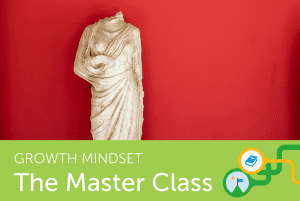
It’s easy to get overly conclusive when talking about growth mindset, or the belief that abilities can be improved over time. We may say, “Oh, I totally have a fixed mindset,” or “After all these years, I finally have a growth mindset.” But the truth is, that’s inherently a fixed-mindset way of viewing the concept, since it presumes that the mindset itself is set in stone. In reality, people don’t have a fixed or growth mindset; rather, they use a combination of the two depending on the situation. The NeuroLeadership Institute has caught this subtle difference many times over during various industry research projects, most recently culminating in our white paper “Impact Report: Growth Mindset Supports Organizations Through Disruption.” The paper features five case studies from companies making growth mindset come to life and driving lasting change. This variety made it clear that fixed and growth mindsets weren’t “switches” that people turned on or off. They were more like dimmers, capable of being dialed up or down depending on the context. How to actually think about growth mindset Think about your own life. Let’s say you like to cook and sing; maybe you’re learning a foreign language, too. At work you’ve just been promoted and now you oversee a larger team than you did in your previous role. It’s quite possible —probable, even — that you approach each of these domains with a different mindset about your abilities. Perhaps you relish the chance to try new recipes in the kitchen, and add more French to your vocabulary — classic growth mindset. At the same time, you feel like your singing chops aren’t good enough and leadership skills have hit a ceiling, each possibly indicating a fixed mindset. All those scenarios make it impossible to fairly say you have a fixed or growth mindset, because you’re using both all the time. NLI’s research over the past several months made it clear that leaders should go easy on themselves when developing a growth mindset, since the skill itself is something new to nurture. The key is to recognize when thoughts become self-limiting, and then actively work to move toward growth. If leaders can make this mental shift, past research suggests, they’ll be better at instilling growth mindset in their direct reports. In time, they can even create what NLI calls a Growth Mindset Culture — a confluence of growth mindset across an organization, each employee finding more value in getting better as opposed to being the best. This article is the fourth installment in NLI’s series, Growth Mindset: The Master Class, a 12-week campaign to help leaders see how the world’s largest organizations are putting growth mindset to use. [action hash=”cd97f93c-1daf-4547-8f7c-44b6f2a77b77″]

Change is the only constant, the old adage goes, which might explain why today’s organizations are so focused on adaptation. After spending several months interviewing 20 global organizations about growth mindset, the NeuroLeadership Institute has identified six business reasons an org might look to put the concept to use, which we’ve summarized below. (Note: Percentages may not add up to 100% due to rounding.) [action hash=”7b17478f-7c52-499f-9fd4-7a4d4b69cfa1″] 1. Digital transformation (38% of sample) The most popular reason an org might focus on growth mindset was to stay agile in the face of technological uncertainty. Big data and artificial intelligence are rapidly becoming commonplace, and organizations of all kinds — mid-tier companies and corporations alike — are looking to keep talent ready to change on a dime. 2. Business improvement (19% of sample) Some organizations used growth mindset to introduce leaner methodologies into their work streams, restructure teams, or implement new business strategies. These orgs wanted to be more agile, too, but focused more on improving internal operations than adapting to market forces. 3. Growing up (13% of sample) Growth mindset meant just that to some organizations: growth. Maturity stood out as a major reason for organizations that were smaller and looking to expand quickly and sustainably. Financial pressures, internal turmoil, and other setbacks often accompanied these efforts. 4. Reinvention (13% of sample) Organizations focused more on pivoting in some form used growth mindset to change their culture, rebound from financial troubles, and shift gears after a shakeup in leadership. Among these organizations, especially, growth mindset represented a way to see challenges as opportunities, not threats. 5. Performance management transformation (13% of sample) For some organizations, growth mindset was instrumental in overhauling the way they interviewed and hired candidates, and evaluated employees. Instead of asking employees to prove their worth, orgs can use growth mindset to see the value in improvement over time. 6. Quality enhancement (6% of sample) The university in our sample was the lone organization to use growth mindset for accreditation. It saw the concept as the means to enhance the quality of its program for the benefit of current and future students. Parting shots Why one organization might embrace digital transformation over reinvention is a product of the industry and size of each enterprise. A major takeaway from our research is that organizations mold growth-mindset efforts to fit their needs. What works for one might not always work for all, so look for the process in your org that may need growth mindset the most. This article is the third installment in NLI’s new series, Growth Mindset: The Master Class, a 12-week campaign to help leaders see how the world’s largest organizations are putting growth mindset to use. [action hash=”7b17478f-7c52-499f-9fd4-7a4d4b69cfa1″]

In-depth interviews with organizations about growth mindset revealed a fascinating collection of goals, use cases, obstacles, and outcomes.
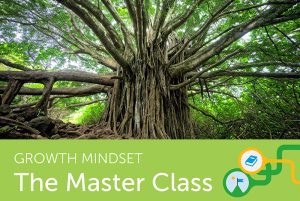
One of the most well-established psychological concepts, growth mindset, has exploded among leadership. But how do you cultivate growth mindset culture?
Join millions of employees in creating culture change at scale by reaching out today.

In 2007, David and Lisa Rock and their team had been working in leadership development and executive coaching for ten years, when David coined the term “NeuroLeadership.”ef

North America
Africa
South America
Asia
Europe
Australia
© NeuroLeadership Institute 2025. All Rights Reserved
This site uses cookies to provide you with a personalized browsing experience. By using this site you agree to our use of cookies as explained in our Privacy Policy. Please read our Privacy Policy for more information.